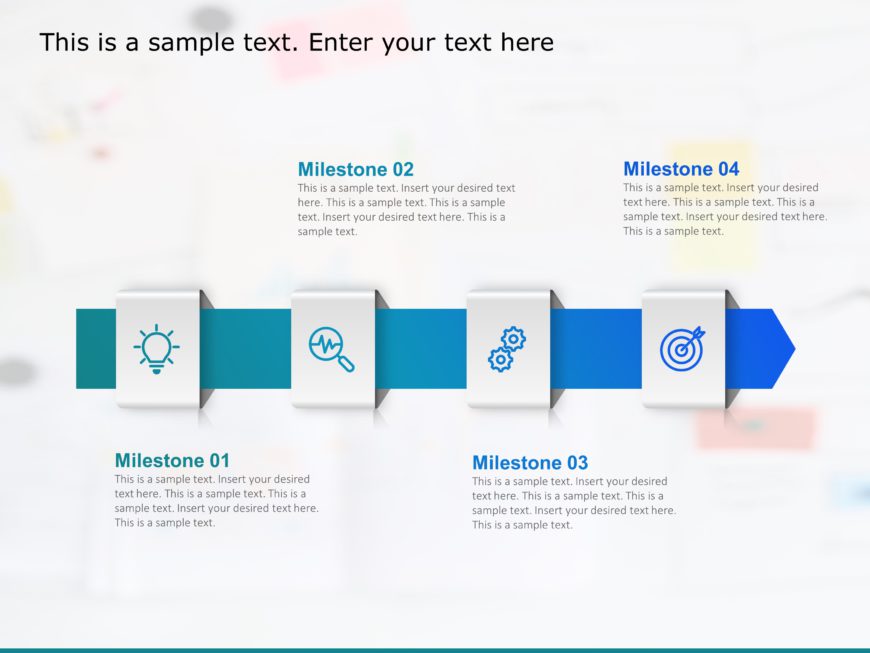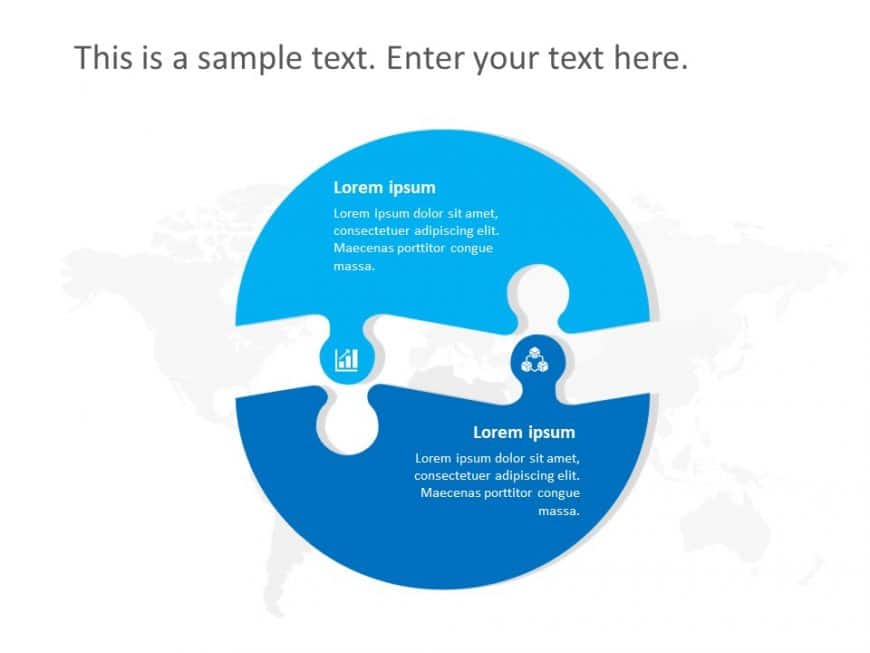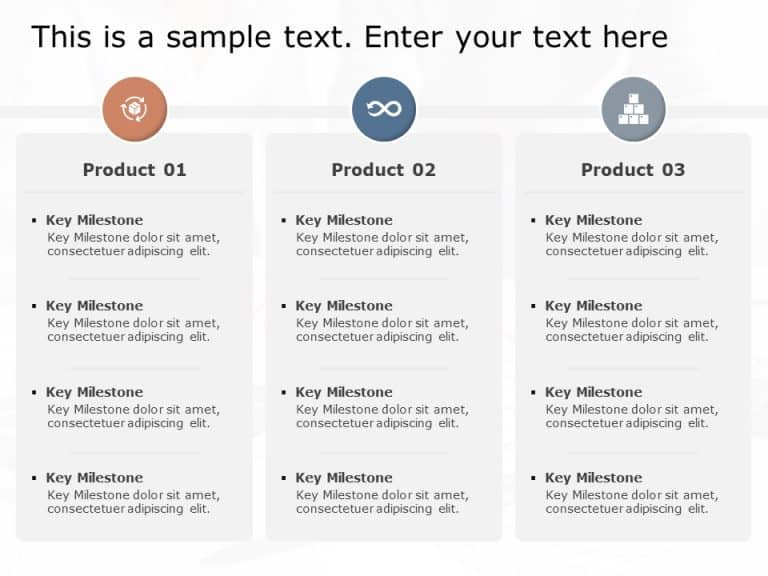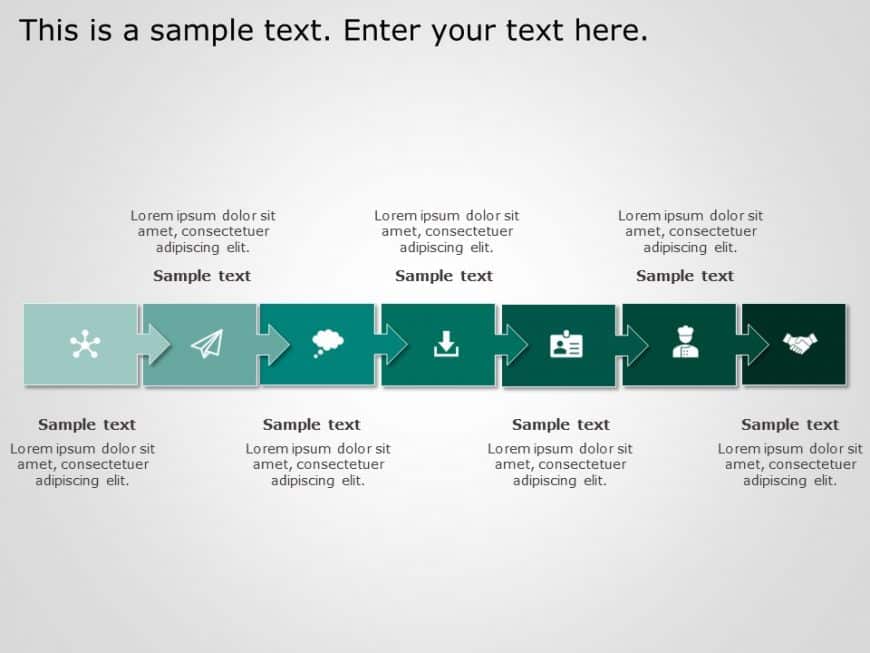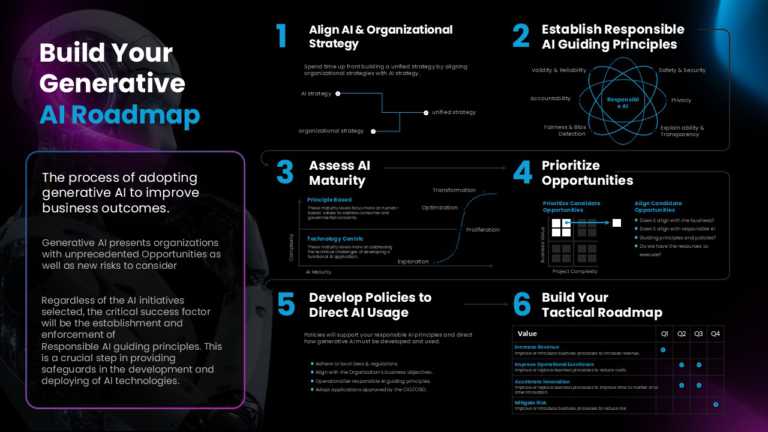Roadmap PowerPoint Templates & PPT Slides (Free and Premium)
Show off this captivating roadmap layout thats crafted to map out your projects path for stakeholders to see! With its design and vibrant colors ....
Technology Roadmap PowerPoint Template helps individuals and businesses communicate their technology strategies, milestones, and future innovatio....
Enhance your presentation, with this captivating roadmap template crafted for achieving business excellence! This attractive slide showcases a or....
Showcase product roadmap with this creatively designed Free Product Roadmap Phases Template. You can use the product roadmap to showcase the new ....
Elevate your meetings with this 3 product roadmap slide! Crafted to lead your audience through project schedules and achievements this template s....
Here is a captivating roadmap template that showcases your vision and leads your audience through the journey ! The lively teal backdrop creates ....
Enhance the ease of sharing information with this appealing career hierarchy template that effectively showcases the progression from positions, ....
Wow your stakeholders, with this roadmap tailored for business strategy development ! This layout showcases milestones in a horizontal format. Id....
Enhance your presentation flow using this roadmap template created to lead your audience through concepts effortlessly.With an lively color palet....
Turn your information into to understand findings using this appealing roadmap design crafted to display various product milestones effectively a....
Share your vision using this roadmap slide crafted for business experts! This design showcases an organized layout to lead your viewers through m....
Give your storytelling a lift with this roadmap built for organizations on harnessing generative AI. The template flashes a blue‑neon vibe that n....
Related Presentations
How Can The Roadmap PowerPoint Template Be Used In A Presentation?
A roadmap PowerPoint slide can be a powerful strategy roadmap template for product managers to use in presentations, especially when conveying strategy, timelines, or progress. Here are some key ways and examples where they can be used:
- Secure Executive Buy-in and Funding: Present your plan with confidence to leadership. A clean roadmap makes your strategy look well-thought-out and credible.
- Align Cross-Functional Teams: Ensure marketing, engineering, and sales are on the same page regarding marketing activities. Everyone sees their role and deadlines clearly.
- Track and Communicate Progress: Use it in update meetings to show what’s completed. It highlights achievements and what is coming next.
- Present a Product Launch Strategy: Visually walk your audience through each launch phase. This builds anticipation and manages expectations effectively.
Many professionals rely on a roadmap PowerPoint template from trusted platforms to save time and ensure quality.
What Presentation Software Can I Use To Create A Professional-Looking Roadmap Slide Template?
You have a few good choices, but if you want to save time, you’ve got to try Neo AI Presentation Maker. It’s like having a design expert right there with you. It’s a clear plan, an Agentic AI presentation maker designed to simplify the entire process.
Why Neo is a great choice for creating Roadmaps:
- AI Roadmaps: Simply describe your project goals, and Neo instantly designs a professional roadmap slide for you.
- Smart Templates for Every Plan: Choose from thousands of AI-ready roadmap layouts—perfect for product launches, timelines, or strategy plans.
- Effortless Customization: Edit milestones, phases, and visuals easily with Neo’s inline editor—no design skills needed.
- Seamless PowerPoint Integration: Build and edit roadmaps directly with PowerPoint and OneDrive for a smooth, connected workflow.
In short, Neo helps you create a stunning product roadmap slide in minutes, not hours. It handles the design so you can focus on your message.
What Are The Pro Tips And Tricks For A Successful PowerPoint Roadmap Templates?
A beautiful roadmap slide is a great start. But to really get your team on board, you need to present it with confidence. Let’s talk about how to do that.
- Begin with the “Why” – Tie every milestone back to a customer need or company strategic goals.
- Be simple and strategic – It is much more helpful to focus on key themes and major outcomes, not on every task you plan to complete.
- Tell a story – Demonstrate how your plan progresses to solve the problem in steps towards a common goal.
- Think of it as a guide, not a gospel – Be open to change, and allow the plan to foster trust.
- Emphasize clarity of design – Use clean visual representations that can be understood at a glance.
- Be conscious of the audience’s language – Provide details for the engineers in the audience and results for executives.
Using these tips will transform your strategic roadmap template PowerPoint presentation. You’ll lead a strategic discussion that excites and aligns everyone.
Why Use Timelines And Swimlanes In Roadmap Presentation Template?
Timelines and swimlanes make roadmap presentations clear, organized, and easy to follow. They help teams visualize tasks, roles, and responsibilities, as well as deadlines, at a glance, making them ideal for client presentations.
| Reason | How It Helps | Example in a Roadmap |
| Clarify project flow | Shows tasks in chronological order | Display a product launch timeline from planning to release |
| Highlight responsibilities | Separates tasks by team or department | Assign design, marketing, and development tasks in swimlanes |
| Visualize dependencies | Shows which tasks rely on others | Indicate that testing starts only after development finishes |
| Track Project progress easily | Monitor completed and upcoming tasks | Mark milestones as “Done,” “In Progress,” or “Upcoming” |
| Simplify complex plans | Breaks big projects into readable segments | Divide a yearly plan into quarterly milestones |
| Improve team alignment | Everyone sees their role and deadlines | Teams know what to focus on each month |
| Engage stakeholders | Makes presentations dynamic and clear | Use colorful swimlanes and arrows to guide viewers |
| Enhance decision-making | Quickly spot bottlenecks or delays | Highlight overdue tasks to adjust resources quickly |
How Can I Effectively Design A Roadmap PPT Template For My Project?
Great roadmap slides aren’t just informative – they’re visually engaging and act as a high-level visual plan. Here’s how to use Microsoft PowerPoint design to make your roadmap crystal clear.
- Highlight key milestones – Focus on important tasks and deadlines.
- Example: Project kickoff, design completion, and product launch.
- Use timelines and swimlanes – Organize tasks by date and team.
- Example: A horizontal timeline for months, with lanes for Marketing, Design, and Development.
- Incorporate icons and color coding – Make priorities and stages clear.
- Show dependencies and progress – Use arrows or progress bars to indicate task flow.
- Example: Arrows from research to development; shaded bars for completion.
- Keep it simple and consistent – Short text, uniform fonts, and colors for clarity.
- Example: Use bullet points and a matching color palette for a professional look.
Remember – your visual design should make the information easier to understand, not more complicated. When in doubt, choose clarity over decoration every time.
What Is The Difference Between A Roadmap And A Backlog?
A roadmap and a backlog serve different purposes in project planning. Understanding their differences helps teams plan strategy and manage tasks effectively, providing a strategic overview of the project direction and objectives.
| Aspect | Roadmap | Backlog |
| Purpose | Shows high-level strategy, goals, and milestones | Lists detailed tasks or features to be completed during project phases. |
| Timeframe | Long-term, often months or quarters | Short-term, often immediate or sprint-based |
| Focus | “What” and “when” – big picture planning | “How” and “who” – execution details for each task |
| Audience | Stakeholders, management, teams | Development team, project managers |
| Level of Detail | High-level overview | Detailed, task-specific items |
| Visual Format | Timeline, swimlanes, milestones | Lists, kanban boards, task tables |
| Usage | Guides overall project direction | Organizes work to be done next |
What Is A PowerPoint Roadmap Template, And How Does It Help In Project Planning?
A roadmap template in PowerPoint is an agile product development roadmap template that provides a slide with a structure intended to offer a visual representation of a project timeline, goals, phases, and milestones. The primary function of the template is to provide project planning so that a clearer picture of the strategic objectives and deliverables is visible for team communication with others in the project or with stakeholders outside of the project.
The following are the advantages of a Product roadmap template:
- Track Progress – Easily track and visualize milestones of work planned or completed, or if it’s still upcoming.
- Improve Team Alignment – Keep the team aligned or on the same page with efficient bug fixes.
- Save Time – Ready-made roadmap PowerPoint templates give you time back into your day to focus on the content of your presentation, instead of spending time on the template and design aspects of making a PowerPoint presentation.
- Increase Professionalism – Utilizing the same design, colors, or fonts is professional to the audience for a series of presentations.
Do Google Slides And PowerPoint Have Roadmap Templates?
Yes, there are roadmap templates available on both Google Slides and PowerPoint for crafting professional project plans with ease. Google Slides offers uncomplicated, editable Google Slides roadmap templates for timelines and other customizable templates for roadmap layouts specifically for grouped projects. PowerPoint, on the other hand, offers a wide selection of pre-developed slides, including storied roadmap slides, visuals, icons, Gantt chart templates, and theme templates. Building presented templates is a great time-saver, ensures consistency, and clarifies complex strategies to your team or stakeholders.
How Do I Customize A Product Roadmap Template In PowerPoint For My Specific Project?
- Select the appropriate template – Choose a roadmap format suitable for your project, breaking down the different phases.
- Alter milestones – Substitute the standard project milestones driven by strategic dates and objectives.
- Include or remove tasks – Add in tasks relevant for stakeholders and remove any that do not improve clarity of understanding.
- Use color wisely – Differentiate priorities, tasks that need to be concluded, actions, or deadlines by color-coding to create a clear digital marketing roadmap.
- Use icons or images – Depict milestones or activities visually by inserting icons or graphics that connect to the relevant point.
- Change timelines or swimlanes – Change the timeframes or team lanes based on your customizable text project timing.
- Revise text and fonts – Preserve short yet descriptive text, easy to read, and match your presentation style.
- Preview – Before you share with your audience, check the flow and overall visual balance.
How Do I Edit Colors And Milestones In A PowerPoint Roadmap Template?
- Select the milestone – Click on the shape, icon, or text representing the milestone.
- Change colors – Use the “Shape Fill” or “Format” options to pick new colors.
- Edit text – Double-click the milestone label to update dates, tasks, or goals.
- Adjust size and position – Drag to resize or move milestones for better alignment and to communicate the details of upcoming product releases.
- Modify shapes or icons – Replace default icons with symbols that fit your project.
- Update timelines – Extend or shorten timeline segments to match your schedule.
- Preview changes – Check the roadmap PPT slide for readability and visual balance before finalizing.
Where Can I Find Free Roadmap Presentation Templates?
SlideUpLift offers a professionally designed free PowerPoint roadmap template, including a creative product roadmap template. We offer a variety of editable PowerPoint and Google Slides templates for use in your next presentation, project, product launch, or planning meeting. Each of our Free PowerPoint templates is visually appealing and can be easily customized, making it easier for you to present complicated plans. With SlideUpLift, you can quickly create simple, engaging presentation slides without investing hours of your time on design.
Why Do We Need To Use A Predesigned PPT Roadmap Template?
- Save time – Pre-designed layouts allow you to concentrate on content marketing rather than design.
- Look professional – Templates guarantee you will be using a consistent font, color, and style.
- Simplify complex plans – Create an easy-to-read milestone and task outline.
- Call your audience to action – Enhancements in your roadmap with visuals, icons, and additional content.
- Customize quickly – Edit title and/or text color and themes in just a few minutes.
Are There Any Online Tools To Easily Create A Roadmap Template For PowerPoint?
Yes, several online tools can help you create roadmap templates and blank timeline templates for PowerPoint with ease. Neo is a next-gen Presentation maker AI that makes creating roadmap templates fast and effortless. It guides you through the presentation workflow, letting you pick a template and automatically populate it with content. You can customize slides with inline editing, sync with OneDrive, and adjust themes and colors instantly. Neo also allows you to reuse roadmap PowerPoint templates from previous presentations, mix layouts, and generate professional-grade roadmap template Google Slides in minutes—perfect for busy teams and project managers.
What Is The Difference Between A Timeline And A Roadmap Template In PowerPoint Presentations?
| Aspect | Roadmap | Timeline |
| Purpose | Shows goals, milestones, and plans | Shows tasks or events in order |
| Focus | What’s important and when | Dates and sequence |
| Detail | Includes teams, dependencies, and priorities | Simple and linear |
| Visual | Timelines, swimlanes, or milestone visuals | Line with markers |
| Audience | Stakeholders and managers are planning a strategy | Team members tracking tasks |








